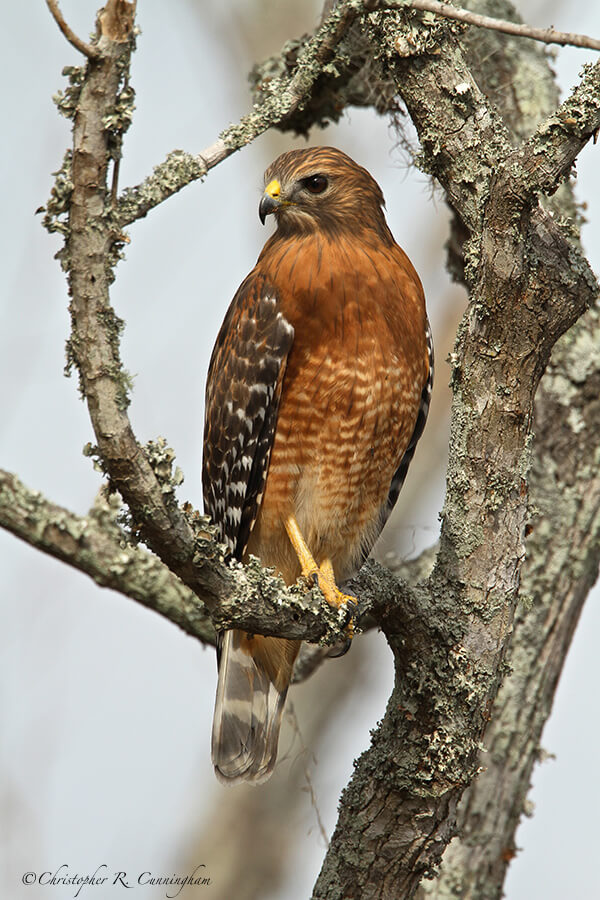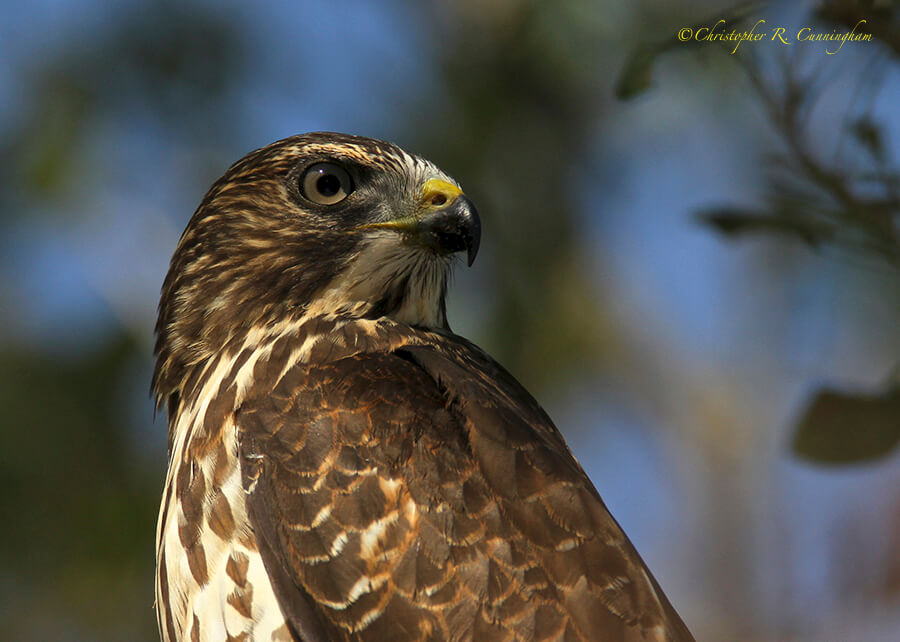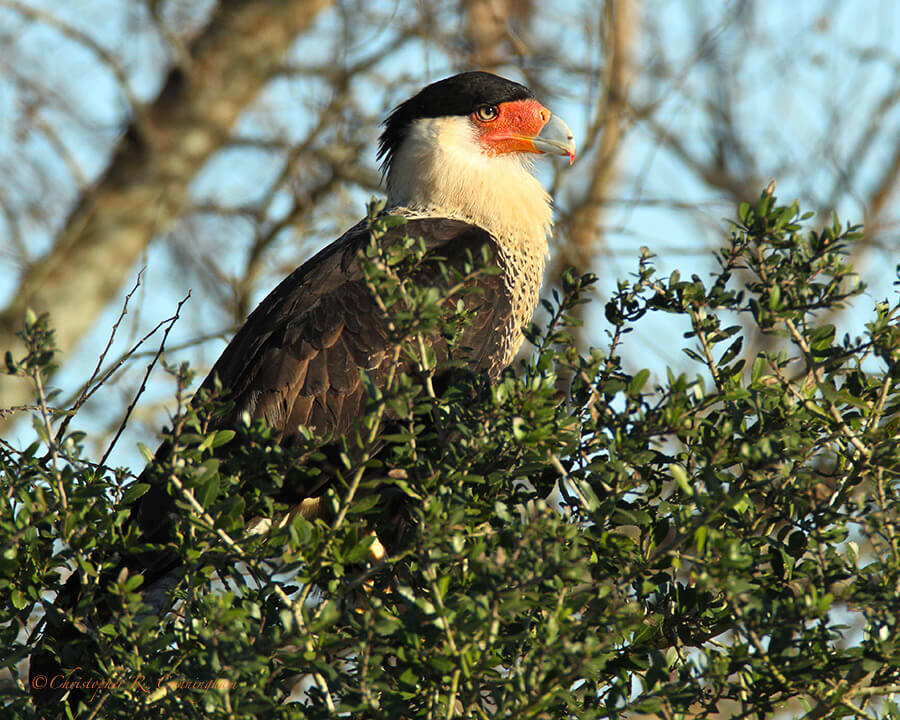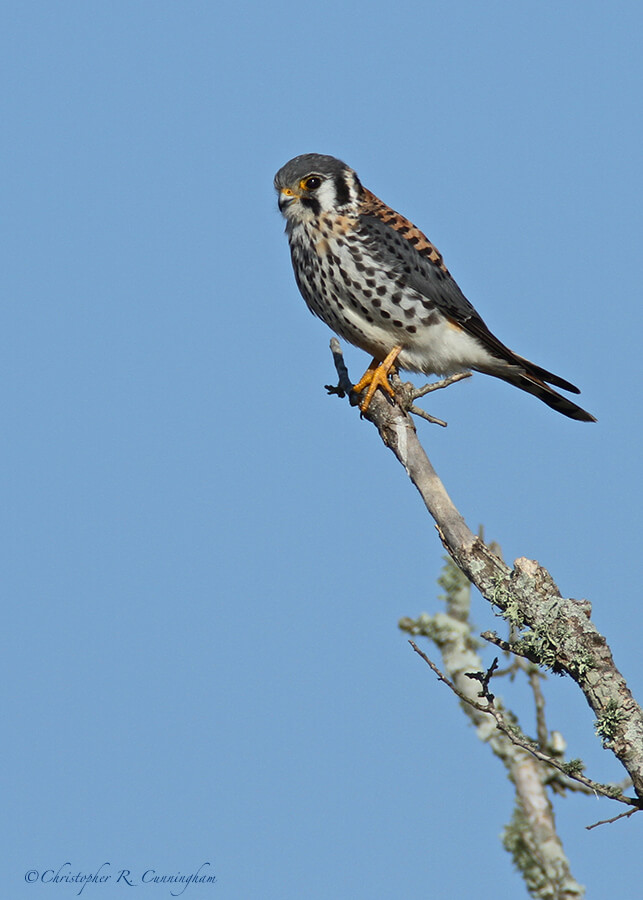
Birds of prey are always exciting to see and photograph, and winter is generally the best time to see them on the Upper Texas Coast. It could be argued, I suppose, that migrations are better in that the possibility exists of seeing transient species like Swainson’s Hawks or Broad-winged Hawks, but winter residents like American Kestrels, Peregrine Falcons, Northern Harriers, Cooper’s Hawks, and Ospreys are common enough to count on and really seem like part of the landscape.

Wintering species plus year-round residents usually mean a visit to places like Anahuac NWR or Galveston Island State Park will yield sightings of at least a few raptor species. Inspection of fence posts and wires, power lines, and treetops at the margins of grassy areas will almost always be fruitful. It’s generally a good idea to keep the camera ready while driving to the coastal sanctuaries as birds will allow a close approach by a vehicle, but will bolt immediately if a door is opened to fish equipment from the back seat or boot.

Because many raptors like to perch in trees to scan for prey below, the absence of deciduous leaves during the cooler times of the year really helps to find and photograph these birds. Perching high in trees, though, can be troublesome for photography given the “belly-shot” problem. Case in point: I still need to find time to return to Bear Creek Park this winter for a group of wintering Merlins. I have seen these birds several times, but in each case they were perched so high in the trees that getting good shots was impossible.
On a final note, photographing raptors really drives home to me the fact that birds live in a hostile world. Most of the raptors I see are immature. This can make identification difficult as many young raptors are hard to tell apart, but more importantly it indicates to me that many of these birds don’t make it to adulthood. Humans, of course, are a big part of this equation, and it saddens me every time I see those striped tail feathers on the road.

Once the amateur’s naive approach and humble willingness to learn fades away, the creative spirit of good photography dies with it. Every professional should remain always in his heart an amateur.—Alfred Eisenstaedt
©2015 Christopher R. Cunningham. All rights reserved. No text or images may be duplicated or distributed.